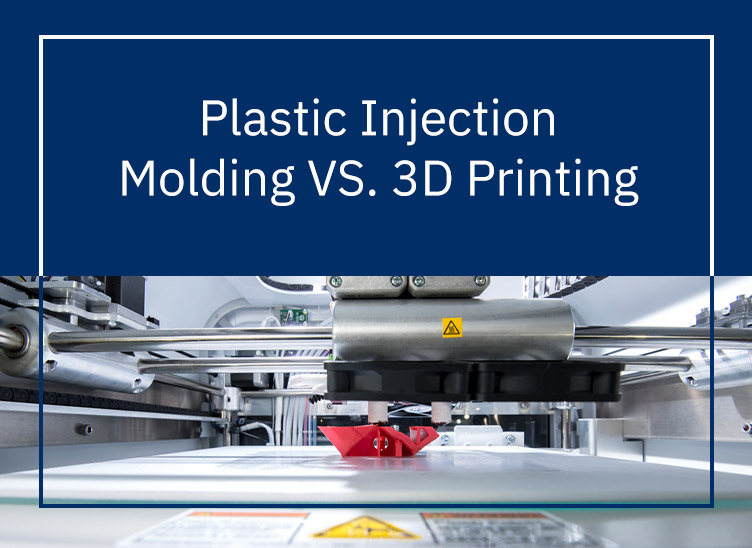
Plastic Injection Molding vs 3D Printing
When it comes to producing complex parts for production, many companies debate between using plastic injection molding technology or 3D printing the pieces instead. Each are viable options with their own benefits. 3D printing uses additive technology, adding material a bit at a time from scratch, using software prototypes. Plastic injection molding injects molten material into a mold that shapes it as it is cooled quickly. If you are looking to fill an order and wonder which process is better, here are some factors to consider.
The Size of the Job
For jobs that are small, meaning less than 100 parts or require small design changes to your prototype, 3D printing is the better option. The reason for this is because making the molds for plastic injection molding requires building molds that may cost more than you are willing to spend. With 3D printing, you can create the prototype in a program and then build up the pieces without molds or excess waste. The less material used means that there are less material costs.
For small projects that need fast, small changes, it is best to do it with 3D printing because of the ease required to make them. Everything done in the program is fast, where changes to the molds in plastic injection molding means creating an all new mold. This not only increases the costs for the mold but also takes more time to accomplish.
Jobs that require 100+ parts, it makes more sense to use plastic injection molding. This is because one mold is made to quickly produce a lot of the pieces. 3D printing does not take a long time for a few pieces, but creating the same pieces repeatedly is slowly built one at a time. With a mold and plastic injection machinery, the same piece is produced the same each time, precisely and quickly. It is also easier to use
The Level of Quality
Not all parts require a high level of quality finish. With 3D printing, parts are not typically finished, which means they need extra steps before they are considered complete. If it is going to be covered in plastic or another finishing product, it can take more time to complete the job and cost more for materials. It is still a fast and convenient option, especially if building the piece from scratch. However, if the part is going to be used in a visible place on a product, 3D printing may not be the most efficient option.
Plastic injection molding creates parts that cure as a single piece and use additive manufacturing. This process produces finished products that will not delaminate in general. Parts are finished faster and able to be used when curing is complete. There are less steps and are still high-quality products.
Finding the Best Production
When 3D printing was first introduced, these two production methods were considered competing technologies, but instead, companies are finding that they complement each other well. While many times one or the other must be used, there are jobs that can combine both processes. Combining the technologies can help shorten pre-production time by creating molds with 3D printing then using plastic injection molding for larger orders. As manufacturing continues to improve, it is easy to see that both will still be used for a long time, hopefully helping each reach their full potential.
Contact Clark Rubber & Plastic for these services and others, including metal milling, solar custom die cuts, and more.
